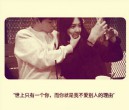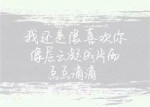
英语作文中的客套话【一】
??庆节中的一件事英语作文During the national day holiday, my mother took me to my aunt's house to play, i found a small aunt's dog gave birth to three puppies dog.
The dog's fur are very beautiful, they are diversiform fur, has a lovely little face; these puppies different personalities, some quiet; some fun; some like fighting.
There is a dog in a white transparent yellow fur with a piece of black hair, more fun is the corner edge has a black hair. because it looks like a little dog, so i call it. there is a dog looks very strange, black dog rounded rounded tail, in addition to white, whole body black, black eyes, black nose, without notice, thought that it has no eyes! because it looks out of the ordinary, i call it "the little dark monster".
I looked at the little guy, happy singing:" dog dog barking, don't let me feed you, become a dog to keep house, to protect my family into the thief.
英语作文中的客套话【二】
[1]Lyons,J.Linguistic Semantics: An Introduction[M].Cambridge:Cambridge University Press,1995.
[2]Saeed,J.I.Semantics[M].Oxford:Blackwell Publisher Itd,1997.
[3]陈汉生.基础英语中的几种歧义现象[J].外国语,1994,(4:72-74.
[4]侯国金.英语语言学精要回答与指南[M].武汉:中国地质大学出版社,1998.
[5]胡壮麟,刘润清,李延福.语言学教程[M].北京:北京大学出版社,1988.
[6]林承璋.英语词汇学引论(修订版[M].武汉:武汉大学出版社,1997.
[7]维多利亚·弗罗姆金,罗伯特·罗德曼.语言导论[M].北京:北京语言学院出版社,1994.
[8]伍谦光.语义学导论[M].长沙:湖南教育出版社,1995.
[9]周立人.英语歧义类例论析[J].国外外语教学,1997,(1:1-7.
英语作文中的客套话【三】
伍谦光(1995∶199指出:“‘词汇歧义’是指由于对句子中某一个词的意义有不同的理解而产生的歧义。”
2.1因“一词多义”(Polysemy引起的歧义
Robert.A.Hall指出“人们在各种不同场合赋予一个词以各种不同的意义。这些意义自然也就是这个词的真正涵义”(周立人,1997∶4。由此可见,一个词的词义往往是多义的。侯国金(1998∶66说:“一个词若具备两个或两个以上的意义便是‘多义词’。”因此,用多义词造句就可能产生歧义。当然,只要我们把多义词放到一定的语境里,一般可以避免歧义。不过有时我们会遇到一个多义词的两个不同意义在句子中都讲得通,这样,句子就产生了歧义。下面是一些实例:
2.1.1名词
(12Mr.Smith gave me a ring yesterday.
句子中的ring可理解为“戒指”,也可理解为“打电话”。
2.1.2动词
(13He painted a tree.
此句中的painted可作“涂上油漆”解,也可作“用颜料画”解。
2.1.3形容词
(14It is hard.
句中的hard可作“艰难的”解,又可作“坚硬的”解。
2.1.4副词
(15The man was walking backwards.
句中的backwards可作“向后”解,又可作“背朝后”解。
2.1.5介词
(16The vase is on the television.
此句中的on,可作“在……之上”解,也可作“上了电视屏幕”解。
2.1.6连词
(17Oil the machine in case it gets rusty.
句中的in case可解释为“以防”,也可解释为“如果”或“当……时候(尤其在美国英语中”。
2.1.7代词
(18You should be quiet.
句中的You可以是主格第二人称代词“你,你们”,也可以是不定人称代词,泛指“任何人”。
2.1.8数词
(19She is a mother of sixteen.
句中的基数词sixteen既可作“十六岁”解,又可作“十六个孩子”解。
2.1.9冠词
(20It can be moved by a child.
句中的不定冠词a既有数量的概念,即“one”的意义,也有种类的概念,即指孩子,而不是大人或其它什么东西。
2.2因“完全同形同音异义词”(Perfect homonyms引起的`歧义
林承璋(1997∶82认为:“同形同音异义是指两个或两个以上的词具有相同形式不同意义的现象。”具体来说,同形同音异义词是指意义不同、读音和拼写都相同或意义不同、但在读音或拼写某一方面相同的词。
完全同形同音异义中的B类由于读音、拼写和词性都相同,所以易引起歧义。下面是一些实例:
(21a.John drove to the bank.
b.He was attracted by the ball.
c.The tourists passed the port at midnight.
这三个例句中的bank,ball,port都属于完全同形同音异义词,即读音、拼写和词性都相同,但由于意义不同而引起了歧义。例(21a中的bank既可以理解为“银行”,又可以理解为“河岸”。例(21b中的ball既可以理解为“球”,又可以理解为“正式舞会”。例(21c中的port既可以理解为“港口”,又可以理解为“葡萄酒”。
英语作文中的客套话【四】
1。Whereas
该词意为:considering that, “鉴于”,“就(而论”,常用于合同协议书的开头段落以引出合同双方订立合同的理由或依据。如:Whereas Party A desires to use the Patented Technology of Party B to manufacture and sell the Contract Products……鉴于甲方希望利用乙方的专利技术制造并销售合同产品。
2。Whereby
该词意为:by the agreement, by the following terms and conditions,“凭此协议”,“凭此条款”,常用于合同协议书中以引出合同当事人应承担的主要合同义务。如:
A sales contract refers to a contract whereby the seller transfers the ownership of an object to the buyer and the buyer pays the price for the object。 句中a contract whereby the seller transfers……意为:a contract by which the seller transfers……
以上是对外经贸合同英语中几个典型旧体词用词方面的重要的特点,笔者希望初涉外经贸合同的教师和学生予以留意,有针对性地学习,达到事半功倍的效果;也希望进行外贸合同写作时也能把握住这几个特点,写出好的外经贸合同,顺利地进行外贸业务往来。



















